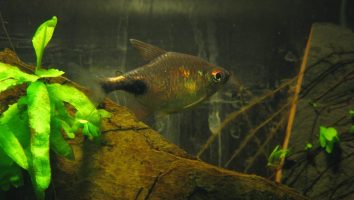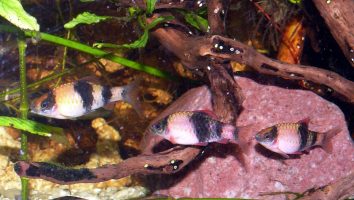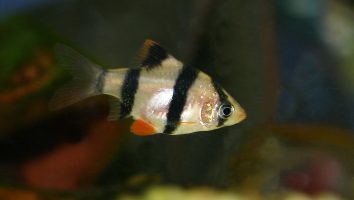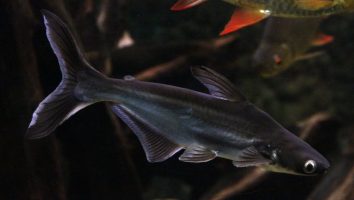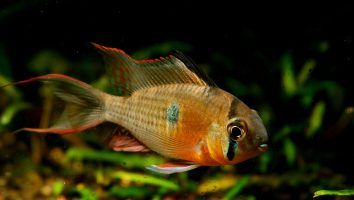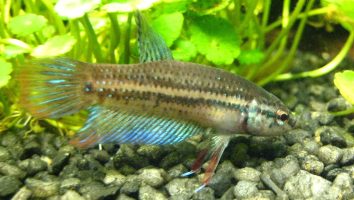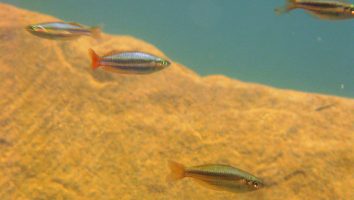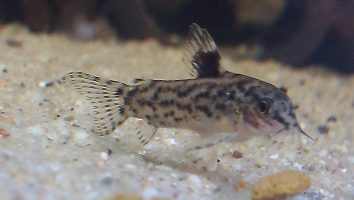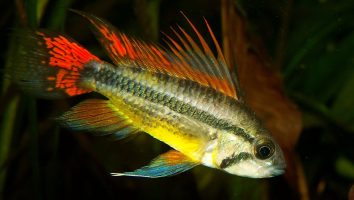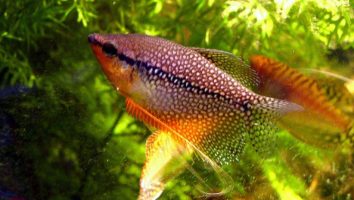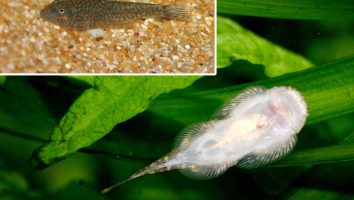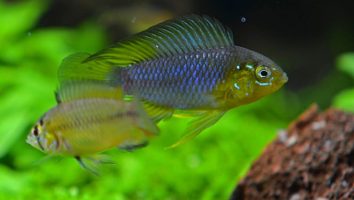The sixray corydoras is a beautiful and unique freshwater fish that is perfect for any aquarium.
This species is not only stunning to look at, but is also very peaceful and easy to care for.
In this guide, we will teach you everything you need to know about sixray corydoras care. You’ll learn about their diet, size, lifespan, and more!
Table of contents
Species overview
Sixray corydoras (Corydoras sexlineatus) is a type of armored catfish that is found in various parts of South America, specifically in Peru, Brazil, and Bolivia.
They prefer slow moving waters with a lot of vegetation. This is something that is relatively common among many species of Corydoras.
Sixray corydoras are a peaceful fish that is often found in community tanks. They get along well with other fish and won’t bother any tank mates.
One of the most notable things about this fish is the six vertical stripes running down its body. This is something that is not seen in many other types of fish and makes the sixray corydoras a very unique looking aquarium fish.
Appearance
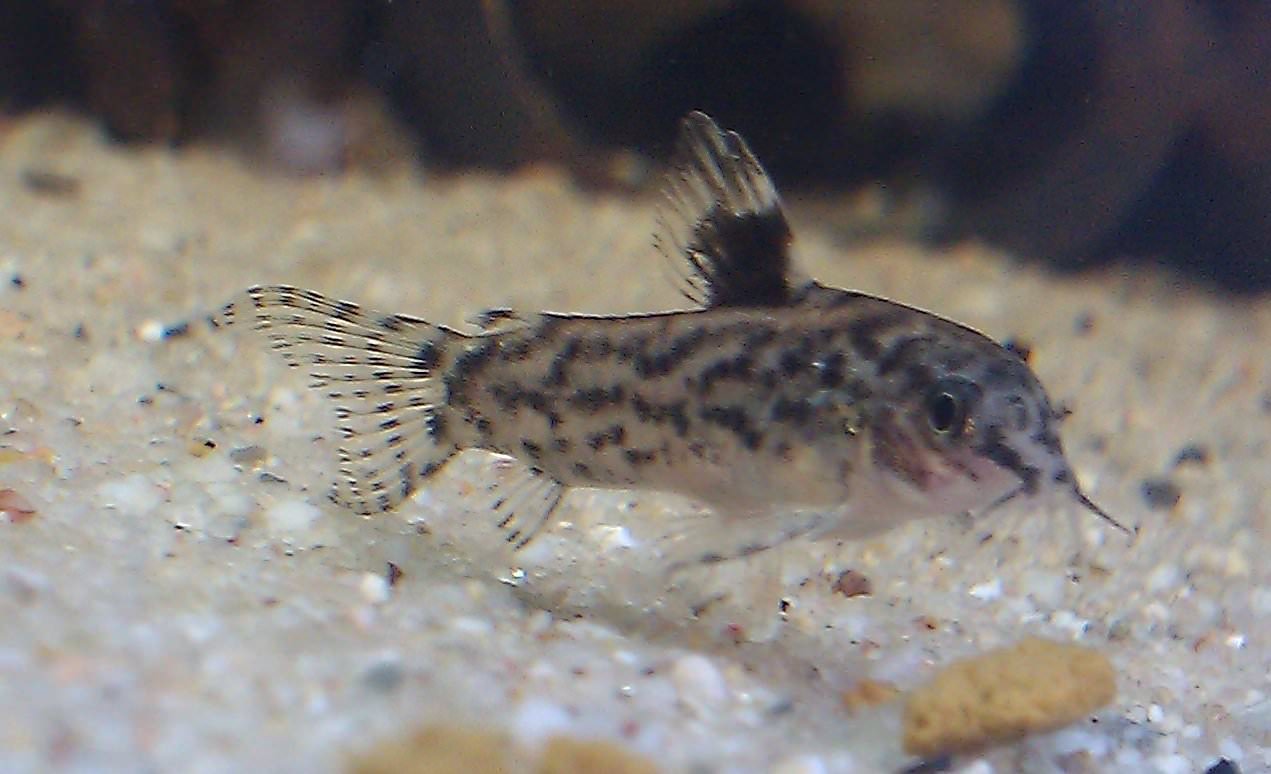
The first thing you’ll notice about the sixray corydoras is their coloration. These little fish are a beautiful golden color that’s accented with black stripes running vertically down their bodies.
The fins on this species are also black, except for their dorsal fin which is clear. The dorsal fin is triangular in shape and starts about two-thirds of the way back on the body.
The rest of the fins are shorter and more rounded. Their pectoral fins are small and round while their anal and ventral fins are a bit longer. The caudal fin is forked and symmetrical.
These fish have a relatively long and thin body shape that’s perfect for swimming quickly through the water.
Lifespan
The lifespan of a Sixray corydoras is usually between 3 and 5 years. As with most fish, there are a number of factors that can impact their lifespan.
One of the biggest factors is the quality of the water they live in. If the water is too warm or too cold, has the wrong pH, or is otherwise unsuitable, it can shorten their lifespan.
Stress is also a big factor. If they’re constantly harassed by tank mates or otherwise stressed, it will take a toll on their health and shorten their lifespan.
Size
Sixray corydoras are one of the smaller species of Corydoras, only reaching a maximum size of 2.5 inches.
Tank
Tank Size
The recommended tank size for sixray corydoras is at least 30 gallons. This is assuming you want to keep them in a school of at least 6 fish. If you’re looking for a smaller school we recommend at least 20 gallons.
As with most fish, the more space you can give them the better. These fish are active swimmers and will often be seen chasing each other around the tank. They also like to dig in the substrate so having a little extra space will help to prevent them from stirring up too much sediment.
Water Parameters
The sixray cory is a tropical fish that requires warm water to thrive. A water heater is a necessity for their long-term care.
While corys are fairly adaptable, they prefer a slightly acidic to neutral pH. This can be achieved by using a quality water conditioner during each water change.
Corys are a schooling fish, so they need to be kept in groups of at least six. A 20-gallon tank is the bare minimum for a group of six corys. If you plan to keep more fish in the same tank, you’ll need a larger tank.
- Water Temperature: Between 70°F-80°F
- pH Levels: 6.0-7.0
- Water hardness: between 5 and 19 dGH
- Alkalinity Levels: 3-10 dKH
What To Put In Their Tank
When it comes to setting up the inside of their tank, Sixray Corydoras are pretty easygoing.
These bottom-dwelling fish don’t really care what the substrate is as long as it’s not too rough. Gravel, sand, and even a soft clay substrate will work just fine.
The same goes for plants. These fish aren’t known for being plant-eaters, but they might uproot some things if they get too excited. Avoid putting anything in their tank that can’t handle a little bit of abuse.
As for décor, these fish love to hide. That’s why we recommend including some caves, driftwood, or rocks that they can use for shelter. This will help reduce their stress levels and make them feel more comfortable in their environment.
Just be careful not to go overboard with this. Sixray Corydoras are social creatures and need room to swim. If their tank is too cluttered they might start to experience some aggression problems.
Common Diseases
These fish are pretty hardy and don’t often get sick, but there are a few things you should look out for. The most common disease that affects this species is Ich.
This is a parasites that can cause your fish a lot of distress and, if left untreated, can be fatal. The most obvious symptom of Ich is the presence of white spots on the body and fins of your fish.
If you notice this, it’s important to take action immediately. There are a lot of different Ich treatments out there, so consult your veterinarian or do some research online to find the best course of action.
The other thing you should keep an eye out for is any sort of injury. Sixray corydoras are bottom-dwellers and, as such, are often the target of aggression from other fish.
If you see any cuts, scrapes, or bites on your fish it’s important to treat them right away. These injuries can easily become infected, so it’s best to nip them in the bud as soon as possible.
Behavior & Temperament
The sixray corydoras is a peaceful, shy fish that prefers to stay in groups. In the wild, these fish can be found in slow-moving waters in South America. They’re often found in rivers and streams with a sandy bottom.
In the aquarium, sixray corydoras are shy but curious fish. They’ll spend most of their time hiding and will only come out to eat when they feel safe. These fish do best in groups of six or more. If they’re alone, they can be skittish and may not eat.
When they’re in a group, sixray corydoras are fun to watch. They’ll often swim together in a synchronized group. And, they’re not afraid to explore their environment. So, you may see them venturing to the middle or top of the tank from time to time.
Overall, these fish are gentle and peaceful. They’re a great addition to any community tank.
Tank Mates
The sixray corydoras is a peaceful, social fish that does well in groups. In the wild, these fish live in schools of 20 or more individuals.
While you don’t need to have that many fish in your home aquarium, it’s a good idea to add at least six of them. Corydoras are shy fish by nature, and a group will make them feel more comfortable.
Sixray corydoras are also peaceful fish that won’t bother their tank mates. This makes them a good choice for community tanks.
Some compatible tank mates for sixray corydoras include:
- Tetras
- Guppies
- Mollies
- Platies
- Swordtails
- Rainbows
- Barbs
Breeding
These little guys are easy to breed and make great parents!
To start, you’ll need to set up a breeding tank. It should hold at least 20 gallons of water and have a sponge filter. The water should be well-oxygenated and have a temperature between 72 and 78 degrees Fahrenheit.
Then, you’ll need to add some plants. Corydoras like to lay their eggs on plants, so make sure to include some in the tank. You can also use a piece of driftwood or a cave.
When everything is set up, add two males and three females to the tank. These fish are pretty small, so a 20-gallon tank should be plenty of space.
The female will lay her eggs on the plants or surface you provided. The male will then fertilize them.
Once the eggs are fertilized, the parents will guard them until they hatch. This usually takes about a week.
When the fry hatch, they’ll be very small. You’ll need to feed them baby brine shrimp or mashed-up flake food.
Conclusion
The Sixray Corydoras is a great choice for anyone looking for a community fish. They’re peaceful, easy to care for, and can brighten up any tank with their vibrant colors.
We think they’re a great addition to any aquarium and we’re sure you will too!

